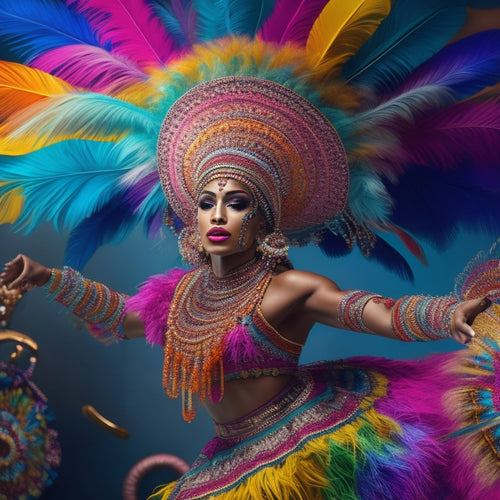
Unveiling The Water Dancer: Literary Insights Revealed
Share
In 'The Water Dancer', Ta-Nehisi Coates cleverly explores history, magic, and powerful character studies to create a profound examination of slavery, memory, and the quest for freedom in antebellum America. Through masterful exploration of symbolism, Coates delves into multifaceted themes of freedom and oppression, skillfully weaving together symbolic imagery of water and copper coins to represent supernatural power and escape. As a seminal work of contemporary American literature, 'The Water Dancer' invites continued critical acclaim and literary analysis, offering a rich tapestry of insights waiting to be uncovered, with each thread revealing new nuances and complexities.
Key Takeaways
• The Water Dancer explores the complexities of slavery and freedom, blending historical fiction and fantasy to create a unique narrative structure.
• Symbolism, such as water representing supernatural power and memory, enriches the exploration of freedom and oppression in the novel.
• The novel's thematic exploration of freedom, privilege, and power is woven throughout the narrative, inviting readers to contemplate the intricacies of slavery's impact on society.
• The Water Dancer has sparked critical acclaim and polarizing reception, cementing its place in the American literary canon and inviting continued literary analysis.
• Through its rich tapestry of insights, the novel offers a profound examination of slavery, memory, and power, resonating deeply with readers and showcasing Coates' skillful storytelling.
Unraveling Coates' Masterpiece
As Ta-Nehisi Coates' debut novel, The Water Dancer, weaves together the disparate threads of history, memory, and magic, it becomes increasingly clear that this masterpiece is not only a testament to the author's skillful storytelling but also a profound exploration of the complexities of slavery and freedom.
Through a nuanced character analysis, Coates masterfully crafts protagonists that embody the multifaceted nature of enslaved individuals, oscillating between agency and subjugation.
The narrative structure, a blend of historical fiction and fantasy, allows Coates to juxtapose the brutal realities of slavery with the fantastical possibilities of escape. This deliberate narrative choice underscores the tension between the irrepressible human desire for freedom and the crushing weight of oppression, setting the stage for a rich exploration of the human experience.
Diving Into Symbolism and Themes
Through Coates' masterful deployment of symbolism, the novel's multifaceted exploration of freedom and oppression is further enriched, as the author strategically employs water, copper coins, and other motifs to illuminate the complexities of slavery and the human experience.
The symbolic imagery of water, representing supernatural power and the ability to harness memory, facilitates a deeper understanding of the characters' struggles and triumphs.
Meanwhile, the copper coin, symbolizing escape and privilege, serves as a poignant reminder of the stark contrasts between freedom and bondage.
This nuanced thematic exploration of freedom and privilege is skillfully woven throughout the narrative, inviting readers to contemplate the intricacies of slavery and its enduring impact on American society.
Literary Merit and Critical Reception
With its debut at the pinnacle of The New York Times fiction best-seller list, The Water Dancer instantaneously commanded attention, sparking a critical frenzy that would ultimately reveal a complex tapestry of opinions on its literary merit. The novel's critical acclaim was matched only by its polarizing reception, with some hailing it as a masterpiece of literary analysis and others criticizing its execution.
Despite this, the novel's thematic exploration of memory, power, and freedom resonated deeply with readers. Through its nuanced exploration of slavery and the Civil War, The Water Dancer has cemented its place as a seminal work of contemporary American literature, inviting continued critical acclaim and literary analysis.
Frequently Asked Questions
How Does Coates' Comic Book Influence Impact the Novel's Narrative Style?
Coates' comic book influence infuses the novel with graphic storytelling elements, as seen in the superhero parallels between Hiram's Conduction and classic superhero origin stories, blurring the lines between fantasy and historical reality.
What Role Does Research on Slavery Play in Shaping the Novel's Plot?
Coates' meticulous research on slavery informs the novel's plot, ensuring historical accuracy and nuance, as he masterfully weaves together the painful legacy of slavery, skillfully illuminating the lingering impact on contemporary American society.
How Does the Novel's Magical Realism Enhance the Portrayal of Slavery?
In The Water Dancer, magical realism enhances the portrayal of slavery by juxtaposing the brutal Historical Context of bondage with Symbolic Freedom, allowing Coates to subvert dominant narratives and illuminate the complexities of enslaved experiences.
In What Ways Does the Novel's Use of Memory Challenge Traditional Narratives?
Like a palimpsest, where ancient texts bleed through, the novel's use of memory challenges traditional narratives by layering flashback nuances, filling Historical silences, and recontextualizing the past, thereby subverting dominant narratives and reclaiming marginalized voices.
How Does the Novel's Exploration of Privilege Intersect With Themes of Freedom?
The novel's exploration of privilege intersects with themes of freedom by illuminating the intricate social hierarchies that perpetuate oppressive power dynamics, thereby highlighting the ways in which privilege can both facilitate and restrict access to freedom.
Related Posts
-

5 Essential Tips for Dance Makeup Artists Online
As a dance makeup artist, you know having a strong online presence is key to success. You need a professional website...
-

Unlock Your Creativity With Dancing Sublimation File
Dancing Sublimation File is a creative catalyst that opens up a world of vibrant design possibilities, providing high...
-

Moo! Unveiling Latin Dance Culture Sensation
Latin dance culture is a vibrant phenomenon that embodies the essence of identity, community, and self-expression, re...


